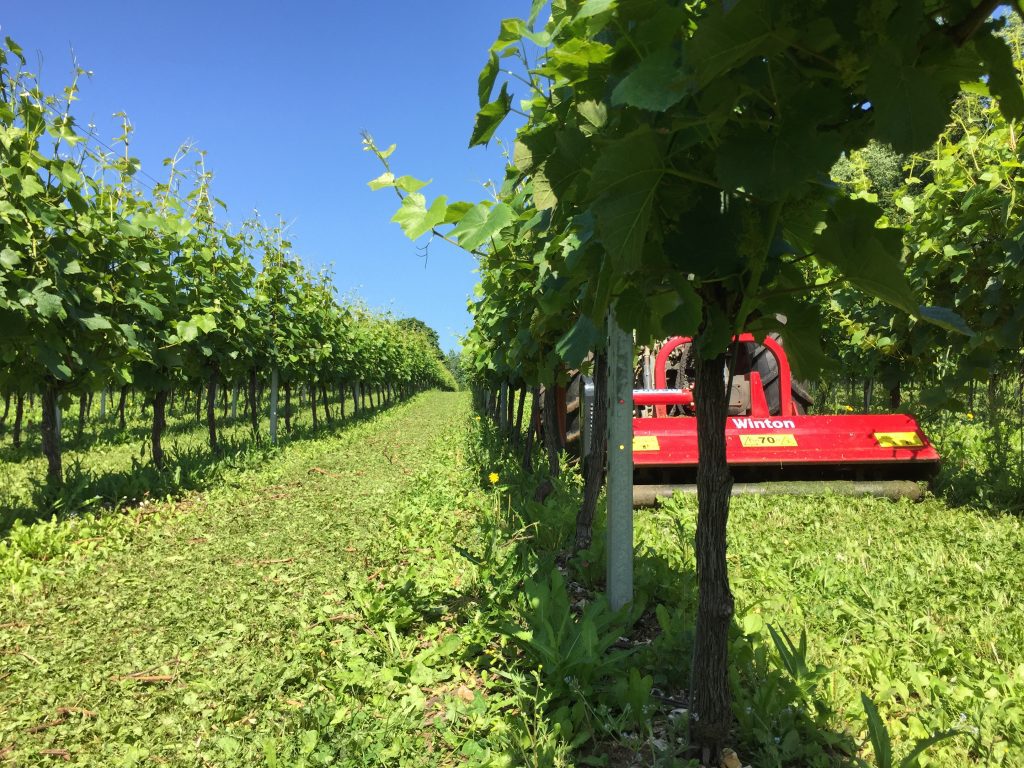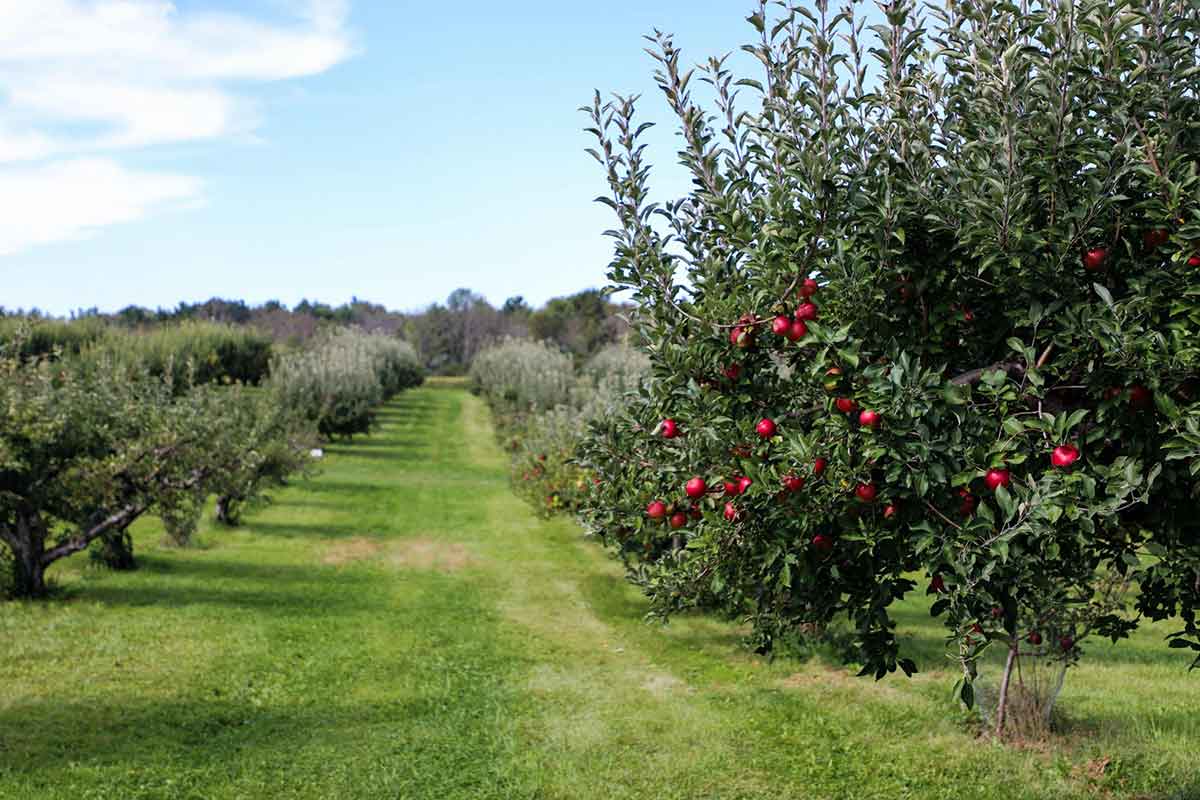Emma at Farm Tech Supplies catches up with James Matyear, Vineyard Manager at Black Chalk Vineyard, to find out about cultivating grape vines. Black Chalk Vineyard are a family business with roots firmly planted in the chalklands of Hampshire, producing beautifully crafted English sparkling wines…
E: Describe a typical working day in a vineyard?
J: Although we follow a growing cycle of the vine, there is no typical day in the vineyard, and that is one of the many things I enjoy about it. Being in a ‘cool climate’ growing region, we are forever adapting what we do and when we do it, depending on the weather conditions and stage of growth at the time. Like all forms of agriculture, we need to be flexible, adaptable and have excellent knowledge of our crop, and the unique characteristics of the land in which in grows.
E: What does a small batch traditional method of winemaking involve?
J: In comparison to mass global producers, we produce small volumes of wine from our four vineyards sited in Hampshire totaling 12 hectares. Each site produces unique qualities and characteristics in the fruit that is produced, which is grown, harvested, and blended to allow the winemakers to express these qualities/characteristics to their full, in the finished wine. The traditional method is the same method as champagne, using a primary fermentation to create the wine, followed by a secondary fermentation in bottle, for a minimum of twelve months. This creates the sparkle and further develops the balance, aromas, and characteristics.
E: What do you do each season to prepare and grow the vines?
J: The vineyard season starts in the depths of winter when the vines are shut down and fully dormant. This begins with pruning, which is all done by hand, all fifty thousand plus vines! As we move into spring, the risk of frost is on all Vineyard Managers’ minds, as any damage to the waking buds during this time can have catastrophic effects on the season and yields for that year. There are various methods of protection, but every method involves long cold nights out in the vineyard protecting the vines. Once clear of the risk of frost, and the daytime temperatures improve, sap will begin to flow in the vine, and the shoots will begin to grow. The new growth is tucked into the trellis wires to keep the vine in a manageable state and keep the rows clear for the tractor to operate. There are many ways vines can be trained, but we use a method called ‘guyot’ which in our case is a single cane tied to a fruiting wire, allowing the new shoots to grow vertically up into the trellis.
The next important stage is flowering, for this we need warm sunny conditions with a gentle breeze, which is not guaranteed in our British climate. Wet weather can lead to failed pollination and poor-quality fruit. As the vines climb above the top trellis wire, it is important to manage and begin trimming the vines, to put the growth energy into the production of fruit, and not foliage. Spraying is carried out to keep the vines free of disease, and to boost any deficiency in nutrition that may occur throughout the season.
With successful flowering, the flowers will develop berries that over the coming months will increase in size and eventually reach a point called ‘veraison’. This is the point at which the bunches will begin to take on colour and start to ripen. We look for sugar levels to increase in the berries, and acid levels to reduce to the desired level of the winemaker, depending on the type and style of wine they are looking to make.
Harvest time depends on several factors, including the weather and variety, and is typically from mid-to-late September through to October. Harvest for us, is all picked by hand and collected into crates that are then taken to the winery to be pressed. It is a critical time that requires large teams working long hours with favorable weather conditions (primarily no rain!). Although it is a busy time and the final push, it is also a time of celebration and huge excitement as we reap the rewards of our hard work.
E: What equipment do you use?
J: There is quite a lot of specialist equipment required in the vineyard. The most important tool in the shed is the tractor in which everything else is operated by. This needs to be both small and narrow in size to fit down the rows, but also strong enough to operate demanding equipment on steep slopes. As the vines develop, we require different pieces of equipment; fertilizer spreaders at the start of the season to ensure the vines have all the nutrition available to them, and sprayers to allow us to keep the vines healthy from disease. We use the flail mower purchased from Farm Tech Supplies throughout the season, to keep the rows and headlands in check, allowing for good airflow, and in turn reducing disease pressure. Vine trimmers keep the canopy under control creating the lovely hedge shape so synonymous to vineyards. De-leafers remove leaves from around the fruit to improve air flow and ripening, and under-vine strimmers (instead of herbicides) keep the weeds under control throughout the season. This benefits insects, wildlife, and the soil. There are many more tools that get used, all of which play a huge part in the success of the vineyard.
E: Can you share any tips on starting a wine business?
J: Winemaking and vine growing are not for the faint hearted! It requires huge amounts of time, energy, and passion, with lashings of financial investment. From a vineyard perspective, you must invest in finding an ideal site that is suited to growing vines in a climatically challenging country. Plan your planting in plenty of time, to prepare the ground for the vines. Once in, the vines are in for many years. Choose appropriate varieties and clones suited to your location and soil type, order your vines from the nursery in plenty of time. Invest in good equipment that will serve you well and last the test of time. Learn everything you can on viticulture in the UK and invest in training. The UK has a fantastic level of support and resources for this industry and is getting better every year. Be prepared not to see any return for several years however, vines are typically ready for a first harvest three to four years from planting. Winemaking then takes anything from four months to two years plus for sparkling wines.
E: Future projects?
J: We are predominantly producers of English sparkling wine, and our vines have been chosen specifically for that purpose. However, there are years when conditions are excellent and sugar levels are high allowing our winemaker to explore other areas and styles. We have just released our first and very exciting still rosé ‘Dancer in Pink’ which has sparked huge amounts of excitement and already picked-up awards. What the future brings, watch this space.
Visit blackchalkwine.co.uk for tours and tastings!








